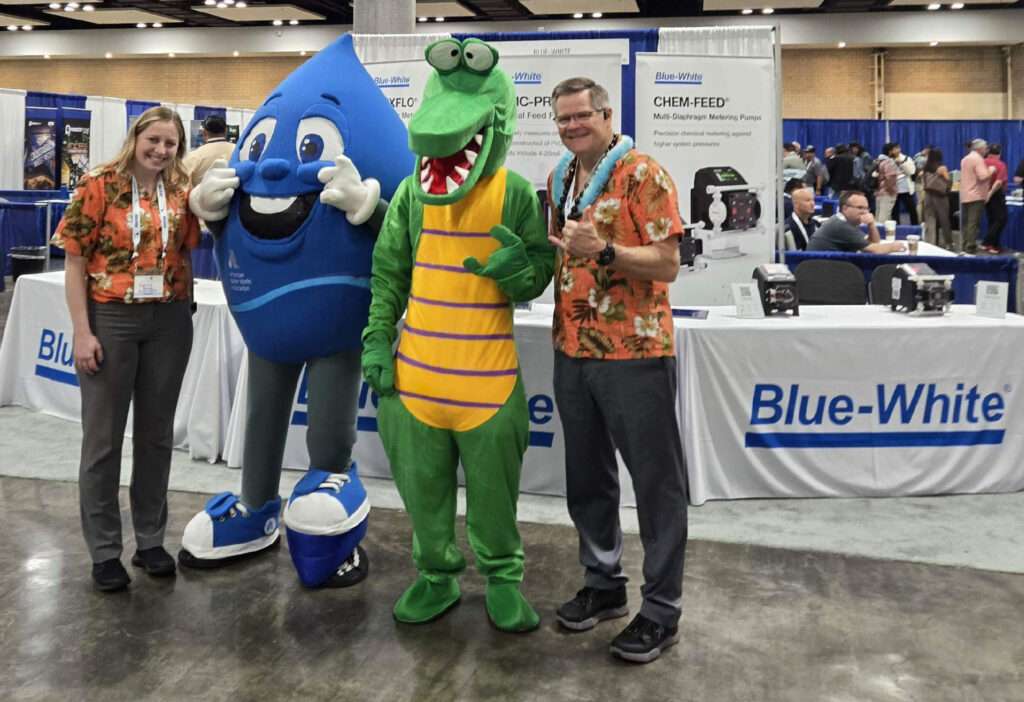
Water Disinfection Pumps & a Visit from ACE Mascot Eddy
It was a busy few days in Honolulu for the Pacific Water

In water treatment chemical metering pumps are used to deliver precise volumes of chemicals, including sodium hypochlorite, peracetic acid and other disinfectants, into water systems. Depending on the type of pump, the chemical being dosed, and other circumstances, operators can experience vapor locking. This phenomenon occurs when gases, typically formed due to the volatility of certain chemicals, accumulate within the pump head. Because gas is compressible, it doesn’t allow for the proper movement of liquid. This creates a blockage which can result in an improper dose or no dose at all. It may even stop the pump.
This article will explain the common causes of vapor lock and provide tips for minimizing or preventing it.
Several factors contribute to vapor locking in chemical metering pumps:
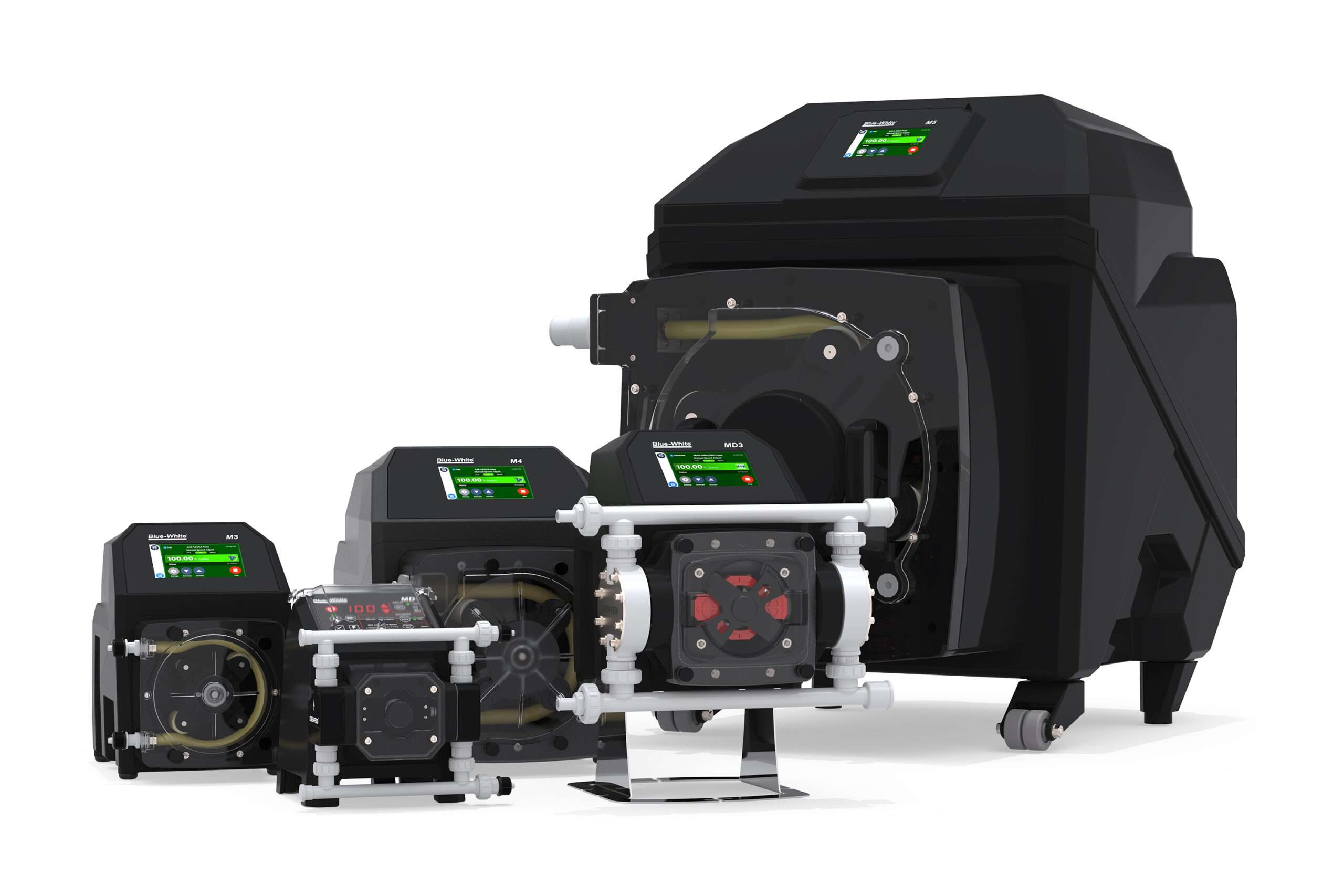
Volatile chemicals. Chemicals that off-gas or vaporize can create air pockets that can cause vapor locking. Sodium hypochlorite, for example, is known to release chlorine gas when it breaks down.
High temperatures. Some liquids that remain stable at room temperature can vaporize when temperatures increase too much. This is particularly problematic in warmer climates or with pumps that have motors which generate too much heat during operation.
Suction lift issues. A high suction lift, or insufficient inlet pressure, can also promote vapor locking. When the pressure at the pump’s inlet drops below the vapor pressure of the fluid, the liquid turns into gas, creating a blockage before the fluid even enters the pump.
Improper pump sizing. Choosing an oversized pump can also contribute to vapor lock. If a pump is too large for the system’s needs or if it’s running too slowly, gas can accumulate in the pump head without being pushed through.
The short-term effects of vapor locking are often immediately noticeable. When vapor lock occurs, the pump either stops injecting fluid entirely or fails to deliver the required dose of chemicals. This can lead to significant disruptions in the disinfection process, potentially compromising water quality and safety.
In the long term, prolonged exposure to gas buildup can cause wear and tear on the pump components, including seals and diaphragms. In extreme cases, it may also lead to pump failure, requiring costly repairs or replacements. In addition, vapor lock can damage the integrity of the entire chemical dosing system, which can result in downtime and increase maintenance costs.
While vapor locking is a serious concern, there are several strategies and technologies available to mitigate its impact and ensure continued system performance.
Auto degassing valves. Some pump manufacturers use auto degassing valves to combat vapor locking. These valves are designed to allow trapped air to escape from the pump head without letting the liquid leak out. The valve automatically opens as air accumulates, releasing the gas and allowing the pump to continue pumping.
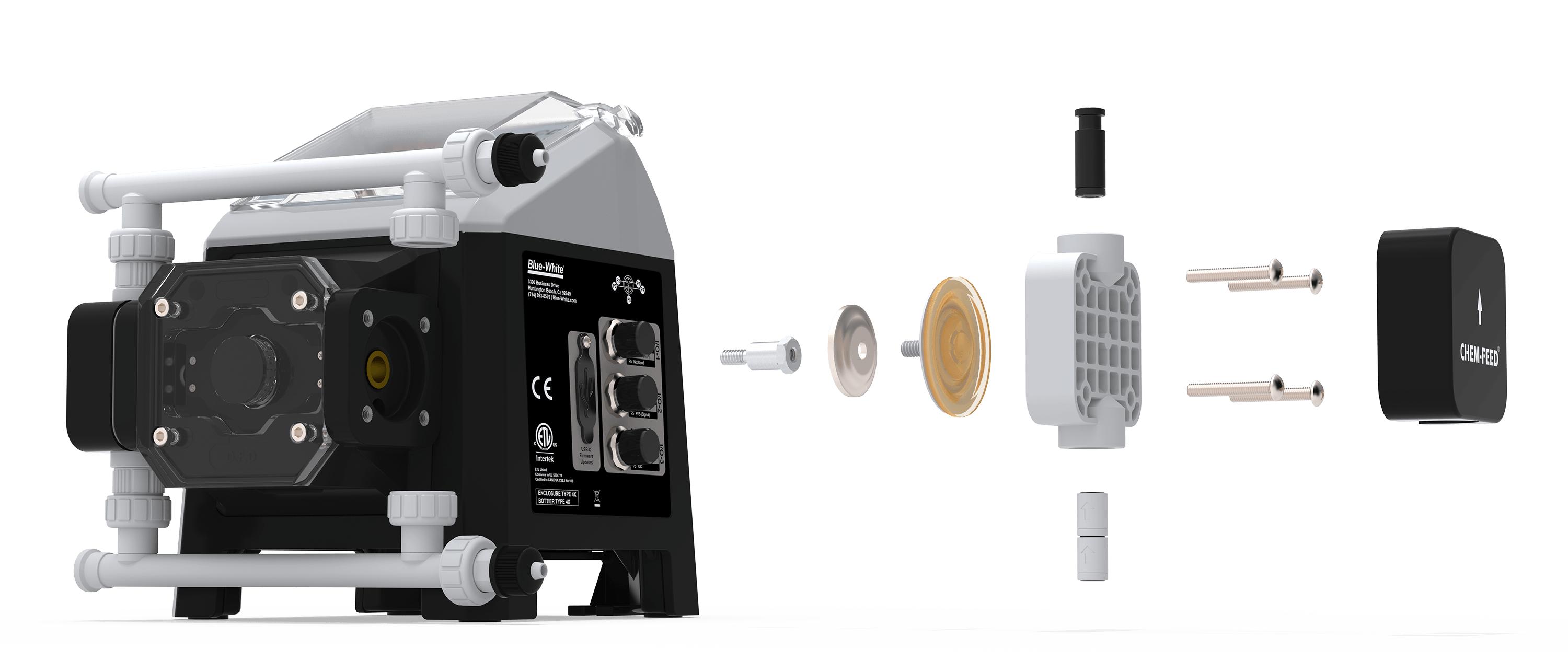
Auto priming. This advanced software feature which is available on some diaphragm pumps, will detect when no fluid is being injected and automatically adjust the pumping operation to prime the pump.
By running the pump at a higher speed for a short burst, the auto prime function helps expel air from the system and restore proper fluid flow.
Optimized pump sizing and operation. As mentioned, an oversized pump that is running too slow can create vapor locking as fluid spends too much time inside the pump’s chambers. Thus, using a smaller pump running at a higher speed could help to minimize gas accumulation.
Switching to peristaltic pumps. Depending on the application, operators could use a peristaltic metering pump rather than a diaphragm pump. Peristaltic pumps are very effective when dosing fluids that contain trapped gases because they are not affected by air bubbles… bubbles simply pass through the pump tube. There is no vapor lock and no loss of prime. However, peristaltic pumps are not always a good choice in high pressure applications.
Pump maintenance and upgrades. Older pumps prone to issues of vapor locking can often be upgraded with aftermarket degassing valves. In other cases, operators can switch to a more suitable pump design. Another option involves regular maintenance, such as checking for leaks and ensuring that seals are intact. These simple procedures can extend the lifespan of the pump, improve overall performance, and reduce instances of vapor locking.
Vapor locking can be a challenge in chemical metering pumps, but it is not insurmountable. By understanding the causes and consequences of vapor lock, operators can take proactive measures to prevent it, including utilizing advanced valve technologies, optimizing pump operation, and maintaining proper system design. By addressing vapor locking effectively, water treatment plants can ensure the continued reliability and efficiency of their chemical dosing systems, ultimately helping to maintain the safety and quality of treated water.
Written by:
Blue-White® Industries
714-893-8529

It was a busy few days in Honolulu for the Pacific Water
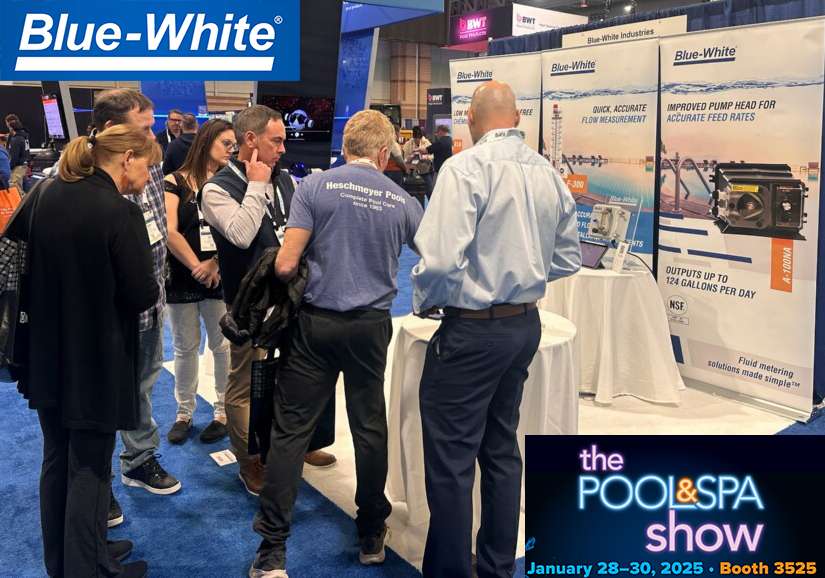
In January Blue-White attended the Pool Show in Atlantic City and displayed

Steve Hernandez /WaterWisePro and Blue-White®’s own Rich Hopkins proved they’re winners. The pair went up
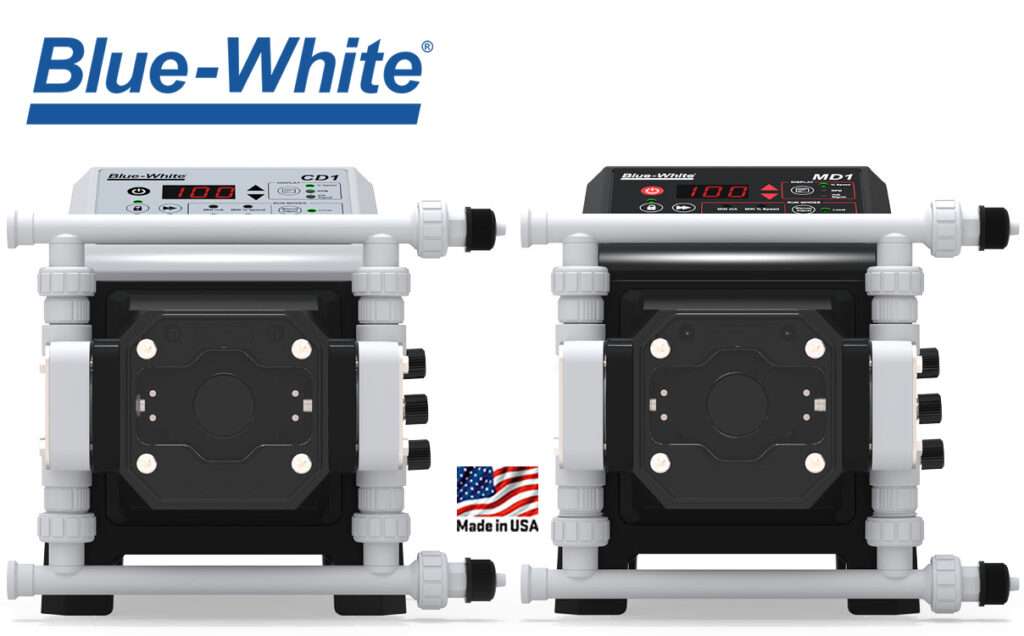
We’re excited to announce we’ve resumed shipment of CHEM-FEED® CD1 and MD1
Copyright © 2024 Blue-White
| Cookie | Duration | Description |
|---|---|---|
| cookielawinfo-checkbox-advertisement | 1 year | Set by the GDPR Cookie Consent plugin, this cookie is used to record the user consent for the cookies in the "Advertisement" category . |
| cookielawinfo-checkbox-analytics | 11 months | This cookie is set by GDPR Cookie Consent plugin. The cookie is used to store the user consent for the cookies in the category "Analytics". |
| cookielawinfo-checkbox-necessary | 11 months | This cookie is set by GDPR Cookie Consent plugin. The cookies is used to store the user consent for the cookies in the category "Necessary". |
| CookieLawInfoConsent | 1 year | Records the default button state of the corresponding category & the status of CCPA. It works only in coordination with the primary cookie. |
| elementor | never | This cookie is used by the website. It allows the website owner to implement or change the website's content in real-time. |
| viewed_cookie_policy | 11 months | The cookie is set by the GDPR Cookie Consent plugin and is used to store whether or not user has consented to the use of cookies. It does not store any personal data. |
| Cookie | Duration | Description |
|---|---|---|
| _ga | 2 years | The _ga cookie, installed by Google Analytics, calculates visitor, session and campaign data and also keeps track of site usage for the site's analytics report. The cookie stores information anonymously and assigns a randomly generated number to recognize unique visitors. |
| _gat_gtag_UA_85334924_1 | 1 minute | Set by Google to distinguish users. |
| _gid | 1 day | Installed by Google Analytics, _gid cookie stores information on how visitors use a website, while also creating an analytics report of the website's performance. Some of the data that are collected include the number of visitors, their source, and the pages they visit anonymously. |
| CONSENT | 2 years | YouTube sets this cookie via embedded youtube-videos and registers anonymous statistical data. |
| Cookie | Duration | Description |
|---|---|---|
| VISITOR_INFO1_LIVE | 5 months 27 days | A cookie set by YouTube to measure bandwidth that determines whether the user gets the new or old player interface. |
| YSC | session | YSC cookie is set by Youtube and is used to track the views of embedded videos on Youtube pages. |
| yt-remote-connected-devices | never | YouTube sets this cookie to store the video preferences of the user using embedded YouTube video. |
| yt-remote-device-id | never | YouTube sets this cookie to store the video preferences of the user using embedded YouTube video. |
Please fill out the form to request a quote.
A sales rep will reach out to you.
| Image | Catalog Number | Description | Price | Buy |
|---|